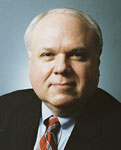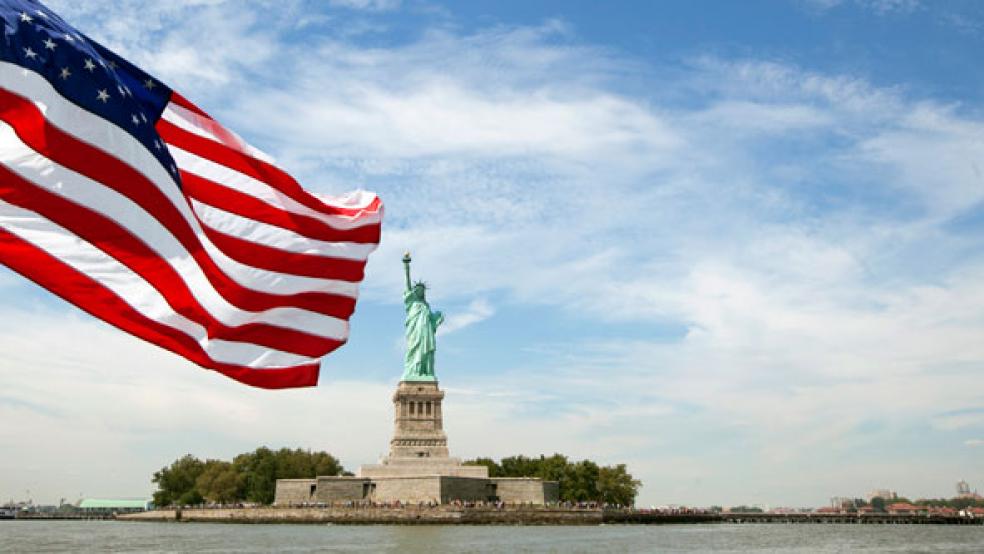It is a fact of life that political trends are cyclical. Neither major party has a permanent lock on control of the federal government. Even in the absence of big events such as the Great Depression that give a long-term boost to a particular political philosophy, people eventually tire of one party’s approach to governing; it becomes stale, corrupted and vulnerable to defeat.

This cyclical trend is not rigid and institutional factors can give one party a virtual lock on part of the government or one region of the country for a very long time indeed. Nevertheless, it is possible to discern which party has the energy to essentially control the national debate, with the other one being mostly a bystander.
Historians continue to debate the precise point at which one party pulls ahead of the other. Sometimes there is fluidity, with one party’s influence ebbing and flowing depending on leadership, the nature of issues on the front burner requiring action, and structural factors within each party.
Nevertheless, it’s clear in hindsight that 1932 was a watershed year for the Democrats that lasted several decades. Although punctuated by Republican Dwight Eisenhower’s and Richard Nixon’s presidencies, and two very brief periods of Republican control of Congress, it’s clear that Democrats were the governing party until 1980.
But philosophically, liberalism was waning well before Democratic control was lost. The election of 1968 signaled a strong conservative revival that might have led to an earlier political realignment without the Watergate scandal, which gave the Democrats a few extra years of power. Watergate also resulted in Jimmy Carter’s nomination by the Democrats in 1976, which delayed the Republican takeover of the South.
Certainly, by the 1980s, it was clear that Republicans and conservatives had come to dominate policymaking. The election of Bill Clinton was, like Eisenhower’s presidency, less of an aberration than a continuation of the underlying conservative trend. Clinton governed very conservatively and made no serious effort to change policy in a liberal direction.
The Republican takeover of Congress in 1994 was simply the formal climax of the rightward trend in politics that had been underway for many years and which has largely continued under Barack Obama. One can argue about how liberal Obama is, but it is obvious that he has not been a transformational president. It is clear that the energy remains on the Republican side with almost all policy issues debated within a conservative framework.
Moreover, it seems almost certain that Republicans will retain control of the House of Representatives next year, and they will have an excellent shot at getting control of the Senate. But, as I explained earlier, Republican hopes of retaking the White House appear long, as the party’s demographic woes grow yearly as its base dies and the Democratic base grows.

Just as the political energy of conservatives turned in their favor long before Republican politics caught up with it, I think there are signs that conservative energy is weakening and liberal energy is rising today.
Conservative energy grew in the 1970s even as the Republican Party was at its weakest point following the 1976 election. On economic policy, the idea of supply-side economics, the monetary roots of inflation and concerns about government overreach dominated domestic policy debate. A more aggressive approach toward the Soviet Union dominated foreign policy debate. And Republicans were beginning to organize a new coalition around fundamentalist Christians in the South that flipped that region permanently from blue to red.
At the same time, liberals were finding it harder to push their own agenda because it sounded tired and boring. Democrats expended more capital defending the New Deal and Great Society than they could muster for coming up with new ideas to deal with inflation, slow growth and Soviet aggression.
Thus it is possible to see the future by understanding the level of energy on various issues and how the electorate views those issues. Eventually that calculus determines national elections a couple of electoral cycles down the road.
I think the indications are that conservatism is running out of steam. Conservatives don’t really have anything they want desperately to accomplish in terms of changing policy. Virtually all of their energy is directed toward stopping liberal initiatives. That is, conservatives are basically on the defensive, as liberals were in the 1970s.
Opposing change works fine when things are generally okay. But when things are not, the energy eventually shifts to the party open to new ideas, to change, to reform and experimentation.
A new poll from Public Religion Research Institute shows growing support for a more liberal approach to policy that I think will gather steam in years to come.
For example, 63 percent of people support higher taxes on those making more than $250,000, with only 34 percent opposed. There is now majority support for allowing gays to marry versus 41 percent opposed.
Raising the minimum wage is supported by 73 percent of people, with just 25 percent opposed. And 54 percent of people favor legal abortion, with 42 percent wanting it to be illegal.
The poll also makes clear that people are becoming increasingly concerned about a lack of jobs, the growing gap between rich and poor, and the declining standard of living. They are becoming more receptive to government activism to deal with national problems and less confident that the private sector can fix them.
These are all issues on which the liberal approach to policy is more popular and the conservative position is weak. I think it is only a matter of time before liberal intellectuals begin articulating specific ideas that will find favor with the electorate--conservatives will be left with little to say except, “no.”
The great unknown is leadership. Republicans lacked leadership in the 1970s to articulate a conservative vision in a politically popular way. That didn’t happen until Ronald Reagan came along.
Today, Democrats lack leadership and much of the party’s weakness vis-à-vis the Republicans stems from it. The party’s base is depressed, lethargic and fearful of attacks from the right. But strong, articulate leadership can turn that around overnight, I believe.
I think there is an enormous opportunity right now for a leader willing to defend a liberal vision and liberal policy and go on the counterattack against the Republicans. It’s a once in a lifetime opportunity for an unknown back-bencher to possibly catapult himself or herself into the presidency, as those with more name recognition and seniority play it safe.





